Read our guide for all the information you need to know about termite inspections if you suspect you may have a termite problem.
Termites can cause serious, lasting damage to your home. A termite inspection is the best preventative measure. All areas that are accessible will be examined by a termite inspector for evidence of past and present termite infestation and damage.
Let’s look at why it’s important for you to understand what a termite inspection is, what a termite looks like, how to get ready for the inspection, and other related information.
You Might Also Like: Termite Damage Vs Wood Rot: What Are They?
What is a Termite Inspection?
An expert will conduct a termite inspection to look for indications of an infestation. The main signs they will look for include evidence of:
- Swarmers
- Mud shelter tubes
- Mud in construction joints
- Wood in your landscape
- Wood damage
These symptoms might be challenging to see with the untrained eye, especially since termites frequently consume wood from the inside out, leaving structures that look intact.
What Termite Inspectors Look For?
When on the hunt, termite inspectors look for a number of crucial pieces of evidence. These are warning signs that you might be able to recognize on your own. Sadly, most of the time you won’t even know you have termites until they’ve destroyed your woodwork. Hence, termite inspections are so important.
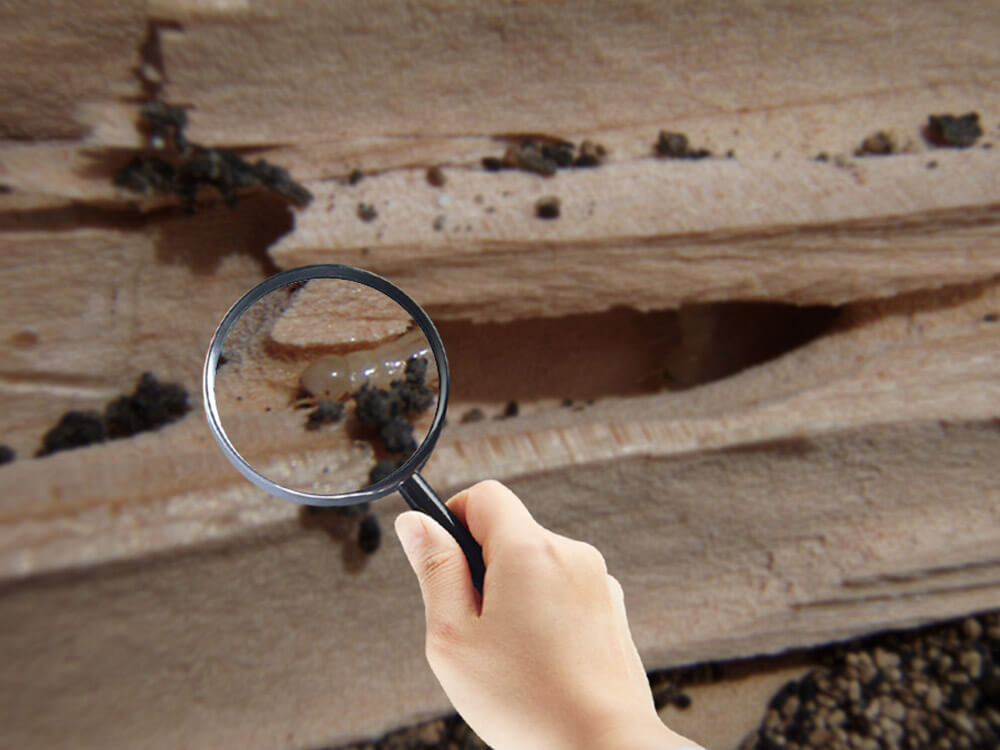
Mud Tubes
To connect their nests to the wood they consume, subterranean termites build mud tubes, their very own superhighways. These pencil-width passages are made of wood and soil, and they are very small. These mud tubes are built by termites for a variety of reasons.
They bind the wood to the soil, provide protection from scavengers, and maintain the termites’ moisture levels.
Although the absence of mud tubes indicates that you are termite-free, mud tubes are a definite sign of subterranean termites. Subterranean termites are still a possibility, and dry wood termites don’t even produce mud tubes.
Wood Damage
Termite activity is evident if you knock on wood and it sounds hollow. The structural joints in your wood sustain serious damage from termites, which results in a crushed or rippled appearance.
A screwdriver can be used to probe the wood and reveal any tunnels. The tunnels built by subterranean termites are always parallel to the wood’s grain, which gives them a distinctive appearance.
Evidence of Swarms
Subterranean termites swarm as soon as the weather begins to warm up in order to start a new colony. They throw away their wings when they leave for more favorable climes, frequently leaving them in heaps.
Frass
Termite dung is known as “frass” informally. Small, oval-shaped granular pellets known as frass make up the material. By baseboards, door frames, and windowsills, termite damage is frequently indicated by frass.
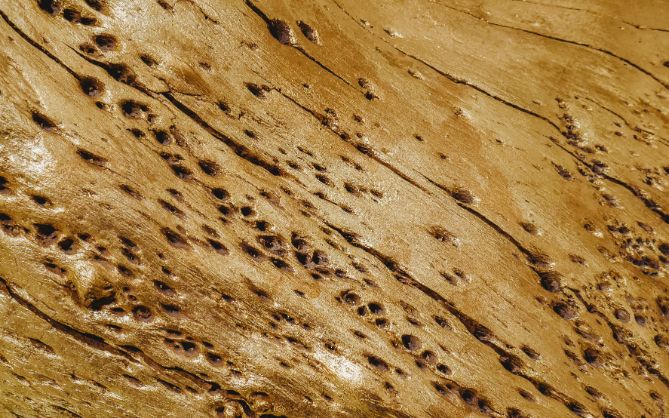
Buckling Paint
Your paint might peel or bubble if you have subterranean termites. Termites damaging drywall make it possible for air and moisture to get in between the paint and the surface. As a result, the moisture beneath the painted surface may begin to buckle.
Remember that your paint may bubble up for a variety of reasons, so it’s not a surefire indication of termite activity.
Live Termites
It can be challenging to find live termites. Make sure you can distinguish it from an ant if you’re unfortunate enough to find one in your home. Workers, soldiers, and reproductives are the three main groups of subterranean termites.
These clusters are all creamy white in color. The reproductives have wings, giving them a more than passing resemblance to flying ants. This is the main distinction between them.
Flying ants and reproductive termites can be distinguished from one another in a few different ways. Termites have two sets of wings, one in front and one behind, similar to flying ants.
While the wings of flying ants are longer in front than in the back, those of termites are equal in length. Additionally, termites have straight antennae rather than bent ones and are thicker in the middle than flying ants.
Key Areas to Inspect
When you’re playing Sherlock to defend your house, there are a few other crucial areas to pay close attention to in addition to your garage, attic, and crawl space.
Wooden Structures
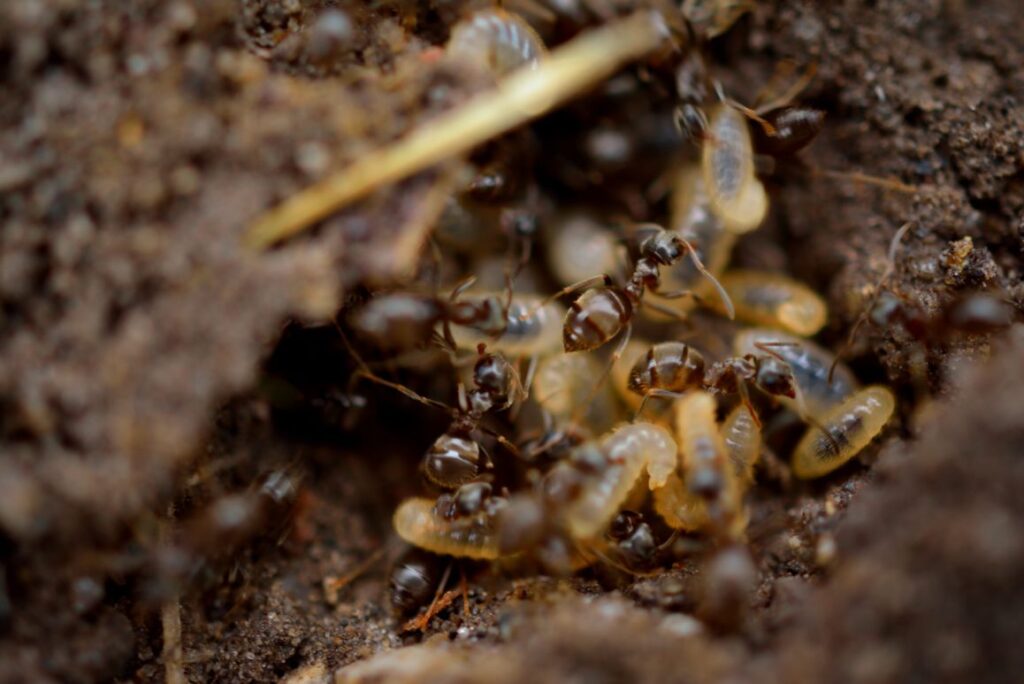
Termites may cause damage to outdoor wooden structures like a deck, shed, carports, or arbors. You should exercise extra caution if termite-resistant materials weren’t used during construction.
Wood Fences
Termites can begin munching on your wooden fencing if they manage to get there, and eventually follow the trail to your house.
Cracks
Termite entry points frequently occur in brick construction and crack in expansion joints.
Deadwood
Leaving downed tree branches in your yard invites termite activity. To protect your property, dispose of any tree limbs.
Firewood
Depending on where you live, you might already have a nice pile of firewood ready for chilly nights. But in reality, these heaps are just setting up for a termite feast. You can certainly keep your firewood, just make sure to keep it off the ground and at least 20 feet away from your house.
Wood Mulch
Wood can be a fantastic component of many mulches, but it can also serve as a food source or a haven for pesky termites. Consider using a different kind of mulch if you think you might have a termite problem.
Why Do You Need a Termite Inspection?
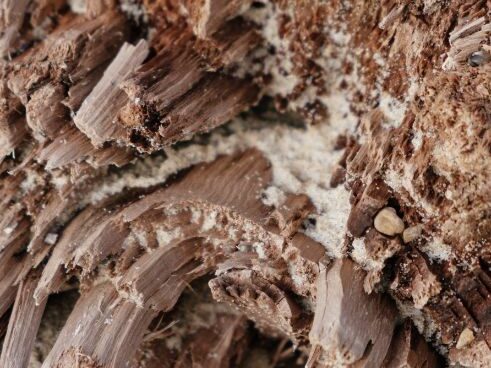
It’s exciting to purchase a home, and it’s simple to become preoccupied with a new home’s aesthetics. It is essential that you get a termite inspection to evaluate any termite damage before signing on the dotted line and before you start decorating your new place.
If you cut corners on this inspection during the home-buying process, your dream home could quickly become a nightmare.
Furthermore, an infestation can drain your bank account even if you aren’t moving because this pest costs the U.S. $5 billion annually in damage., which is actually closer to $6.8 billion when you account for inflation in today’s economy. This expense is typically not covered by insurance, which is unfortunate for homeowners.
Nevertheless, termites are able to infest buildings anywhere in the United States., wood destroying insect inspections are especially important for those who are moving to, or buying a home, in warmer regions of the country where termites are most prevalent.
Termites prefer warm, moist environments, so while buyers might adore Florida, also known as “The Sunshine State,” or the stunning Southern California coast, termites do too. Swarmers are most prevalent in the spring and summer, but inspections are possible throughout the year.
A local pest control expert who specializes in termite work can assist you if you suspect an infestation or require a termite inspection for a home purchase, to sell, or for an annual appointment.
How Do I Know If I Need a Termite Inspection?
This query has a clear and ambiguous answer. You won’t always notice any signs that you need to call an inspector out to look for termites because they are initially nearly impossible to spot.
The best strategy, according to Webb, is to just assume that you require a termite inspection. Hopefully, you’ll receive the all-clear. But even if the inspector does discover termites, you can still count yourself lucky. The reason for this is that you’ll have a chance to address the issue before it worsens.
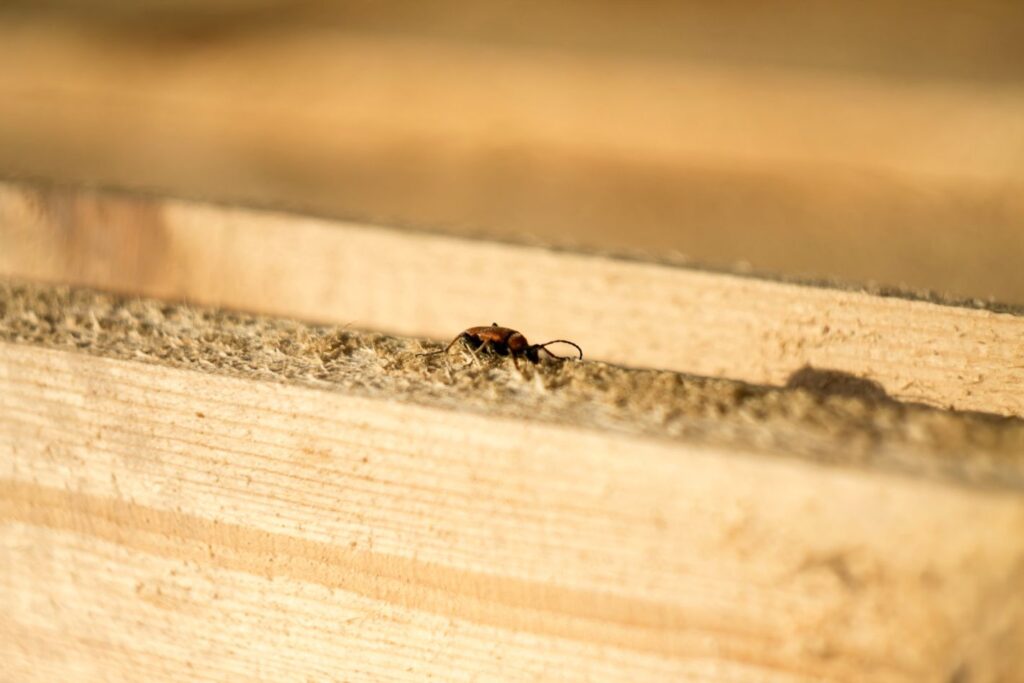
How to Prepare for the Termite Inspection
Clearing all areas that the inspector might need to access is the first step in getting ready for a termite inspection. Therefore, empty the space beneath your sinks in the kitchen and bathrooms and move any furniture a minimum of two feet away from the walls. This will give the inspector space to work and inspect all wooded areas.
Access to the attic and crawl spaces must be simple. To make it easier for the inspector to access both areas, clear the entrances to both and get rid of anything blocking them.
Finally, trim your plants and bushes to keep them away from the home’s exterior wall and foundation. As a result, the inspector will have the chance to access the ground area without being poked or prodded by the shrubbery.
How Much Does Termite Inspection Cost?
Initial termite inspections typically cost around $85. The pest control company will then have the chance to survey the property and recommend the best course of action to you, the homeowner. Following the initial inspection, businesses will typically present a contract that ranges from $200 to $900, depending on the needs of the home. Each linear foot costs between $3 and $16 for a typical treatment, which costs $560.
Bottom Line: Termites Are Little But Fierce
The importance of routine termite inspections should not be underestimated, even if you believe your tidy, clean home is free of termites. If you don’t take the necessary precautions, you could end up paying dearly for your mistake if you develop an infestation, which would have been prevented had you invested in regular inspections.
It is strongly advised to have a yearly inspection of your home and property done in order to effectively protect it from termites.
If you don’t, you might end up having to pay for repairs that would have cost much more to complete than extermination. Due to the fact that termites, despite typically being less than an inch long, have enough force to completely destroy your home.





